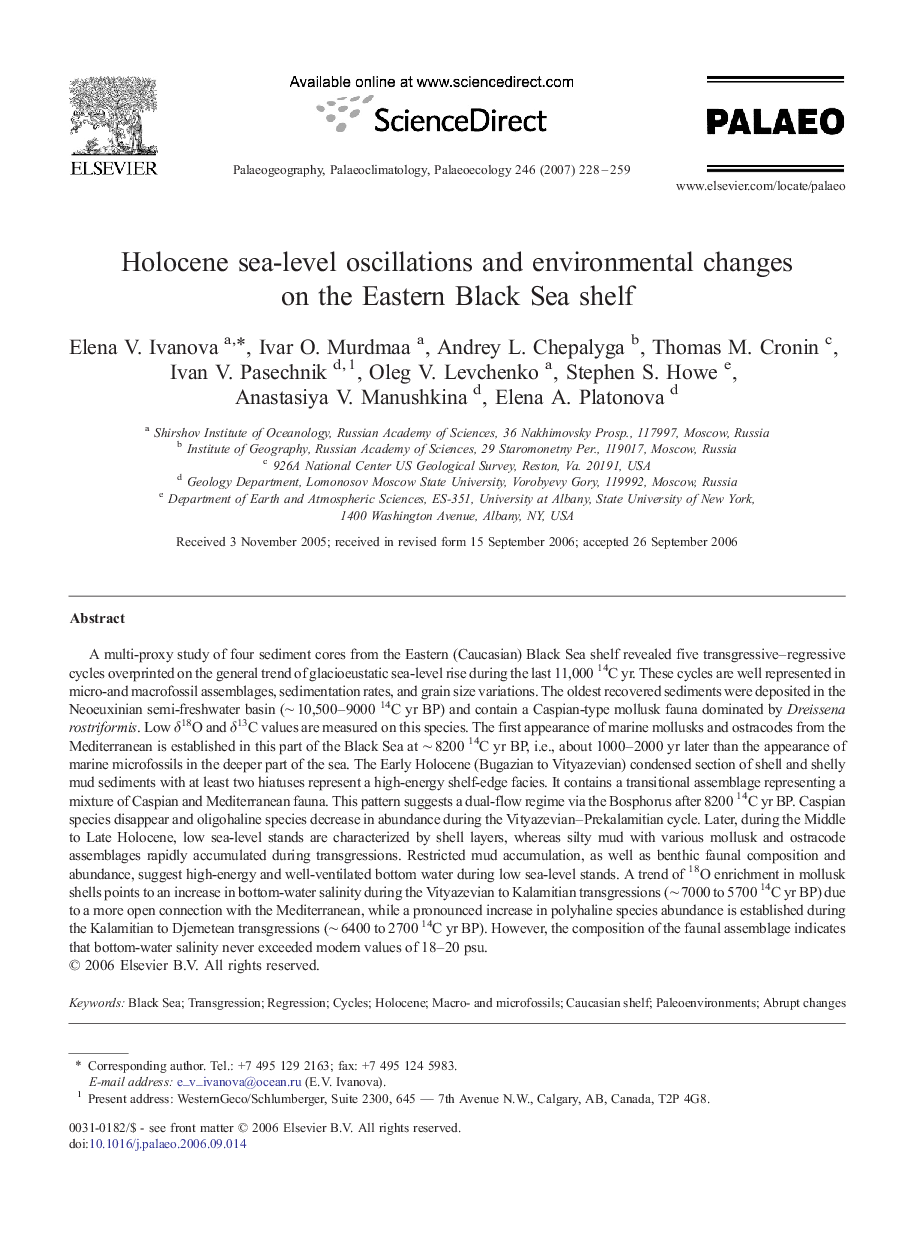| کد مقاله | کد نشریه | سال انتشار | مقاله انگلیسی | نسخه تمام متن |
|---|---|---|---|---|
| 4469035 | 1622356 | 2007 | 32 صفحه PDF | دانلود رایگان |

A multi-proxy study of four sediment cores from the Eastern (Caucasian) Black Sea shelf revealed five transgressive–regressive cycles overprinted on the general trend of glacioeustatic sea-level rise during the last 11,000 14C yr. These cycles are well represented in micro-and macrofossil assemblages, sedimentation rates, and grain size variations. The oldest recovered sediments were deposited in the Neoeuxinian semi-freshwater basin (∼ 10,500–9000 14C yr BP) and contain a Caspian-type mollusk fauna dominated by Dreissena rostriformis. Low δ18O and δ13C values are measured on this species. The first appearance of marine mollusks and ostracodes from the Mediterranean is established in this part of the Black Sea at ∼ 8200 14C yr BP, i.e., about 1000–2000 yr later than the appearance of marine microfossils in the deeper part of the sea. The Early Holocene (Bugazian to Vityazevian) condensed section of shell and shelly mud sediments with at least two hiatuses represent a high-energy shelf-edge facies. It contains a transitional assemblage representing a mixture of Caspian and Mediterranean fauna. This pattern suggests a dual-flow regime via the Bosphorus after 8200 14C yr BP. Caspian species disappear and oligohaline species decrease in abundance during the Vityazevian–Prekalamitian cycle. Later, during the Middle to Late Holocene, low sea-level stands are characterized by shell layers, whereas silty mud with various mollusk and ostracode assemblages rapidly accumulated during transgressions. Restricted mud accumulation, as well as benthic faunal composition and abundance, suggest high-energy and well-ventilated bottom water during low sea-level stands. A trend of 18O enrichment in mollusk shells points to an increase in bottom-water salinity during the Vityazevian to Kalamitian transgressions (∼ 7000 to 5700 14C yr BP) due to a more open connection with the Mediterranean, while a pronounced increase in polyhaline species abundance is established during the Kalamitian to Djemetean transgressions (∼ 6400 to 2700 14C yr BP). However, the composition of the faunal assemblage indicates that bottom-water salinity never exceeded modern values of 18–20 psu.
Journal: Palaeogeography, Palaeoclimatology, Palaeoecology - Volume 246, Issues 2–4, 6 April 2007, Pages 228–259